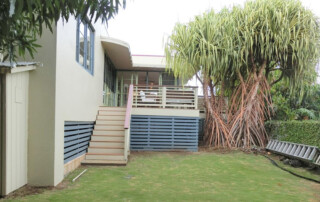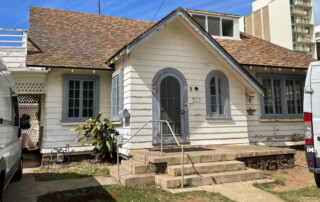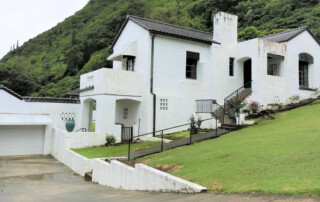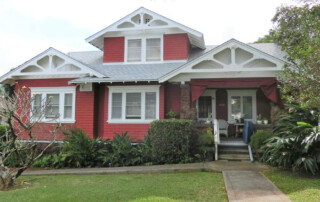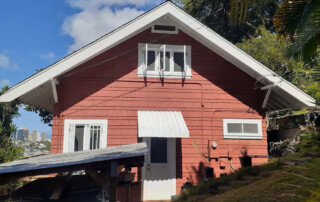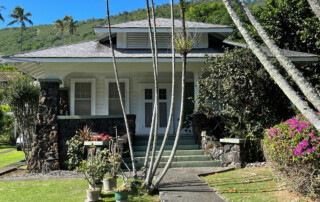3760 Old Pali Road/Herbert Montague “Monty” & Leilani Richards Residence
Address 3767 Old Pali Road, Honolulu, HI 96817 TMK (1) 1-9-009: 040. SHPD Historic Site Number Not Yet Available Abstract The Herbert Montague & Leilani Richards Residence was built in 1933 with a family room added in 1936. Herbert Montague “Monty” Richards (1904-1970) was born in Honolulu to Theodore and Mary (Atherton) Richards, and was the great grandson of missionary Amos Starr Cooke. The residence is significant at the local level under Criterion C as a house built during the 1930s inspired by the Arts & Crafts Movement. The two-story residence has a composition shingled, intersecting gable and hip roof with open, overhanging eaves and exposed rafter tails. The T-shaped, double wall house has six bedrooms and four full and two half baths. It features cedar shingle siding and sits on a post and pier foundation with a vertical slat apron. Elements of an Arts & Crafts style include the picturesque, rambling, asymmetric massing with a projecting corner entry, mix of window types and sizes and prominent window hoods, the flowing roof, pocket doors that close off the living room area, brick chimney and fireplace and simple, built-in bookcases in the living room and study.



